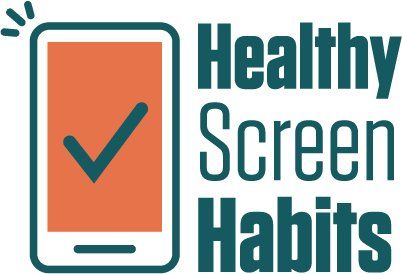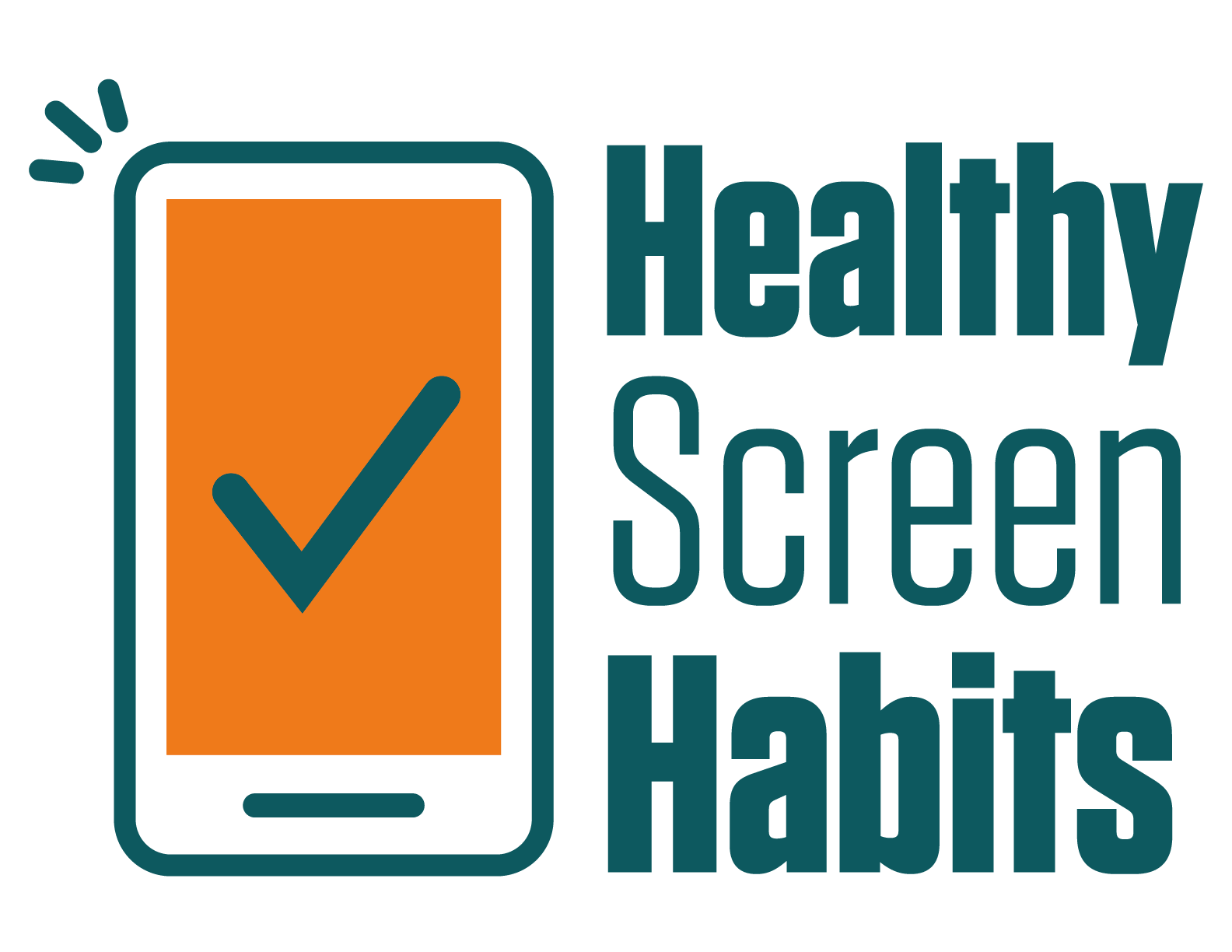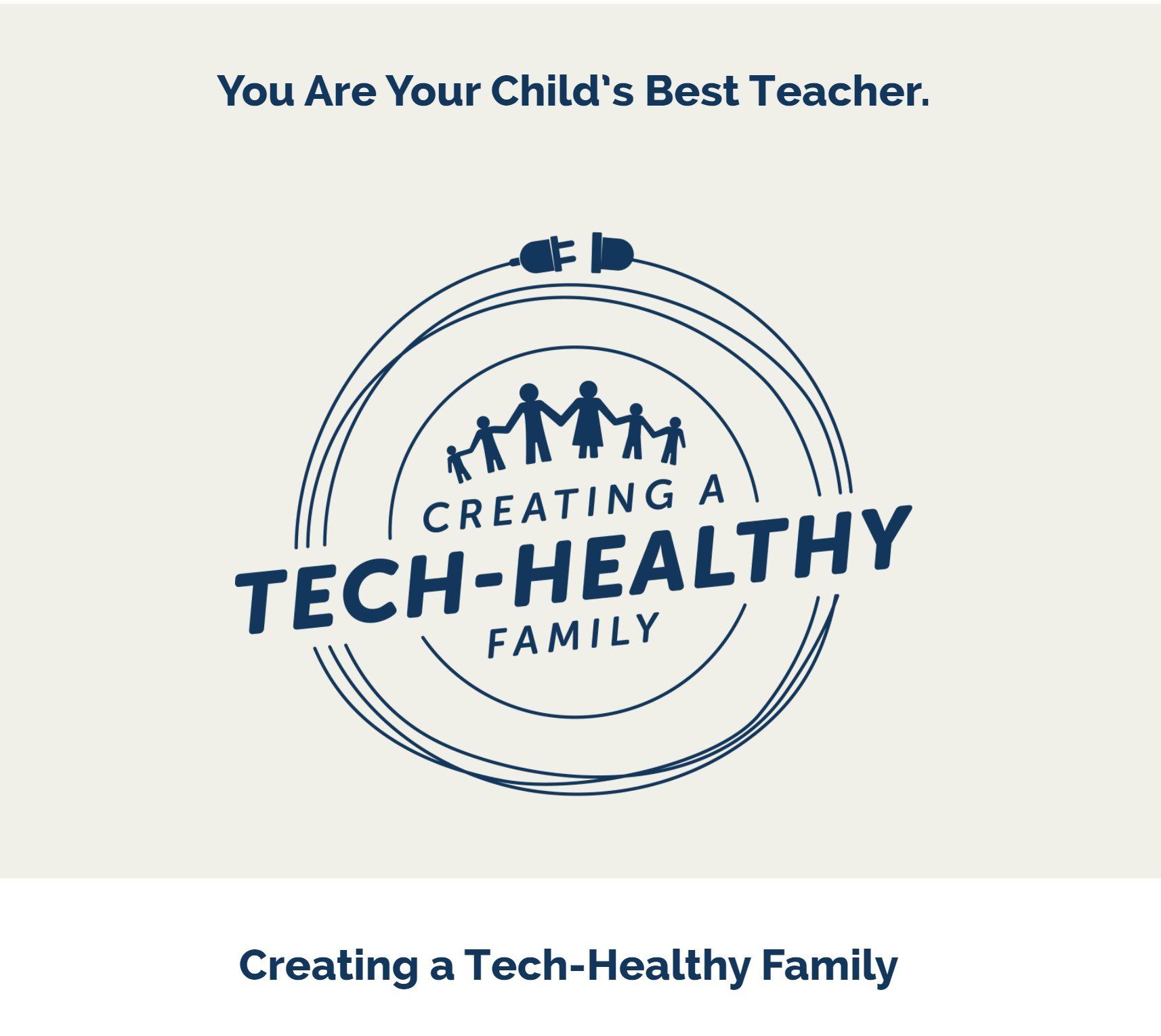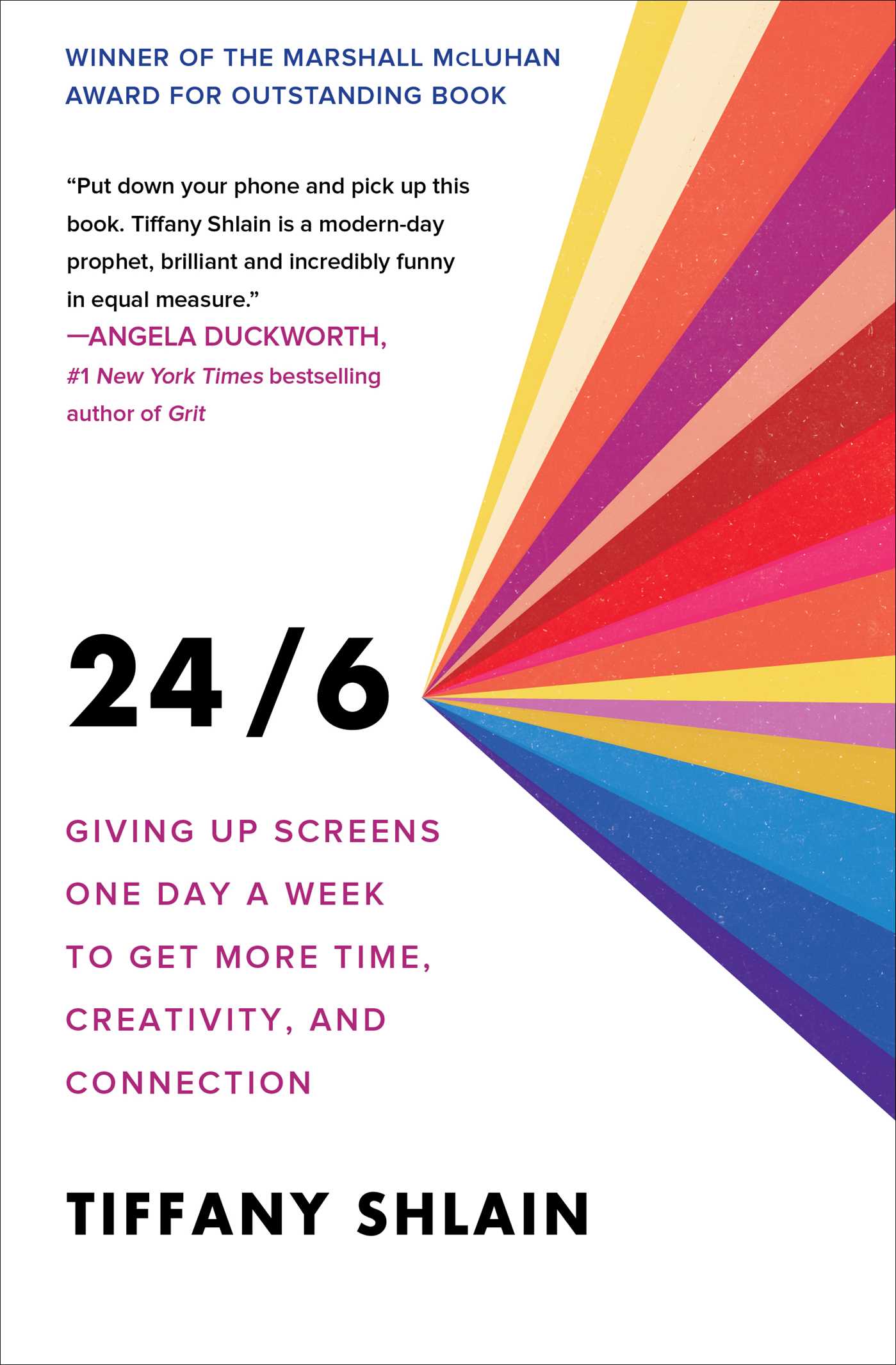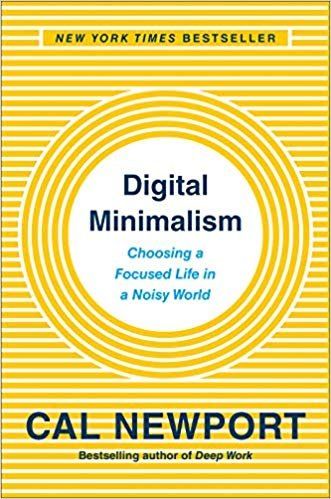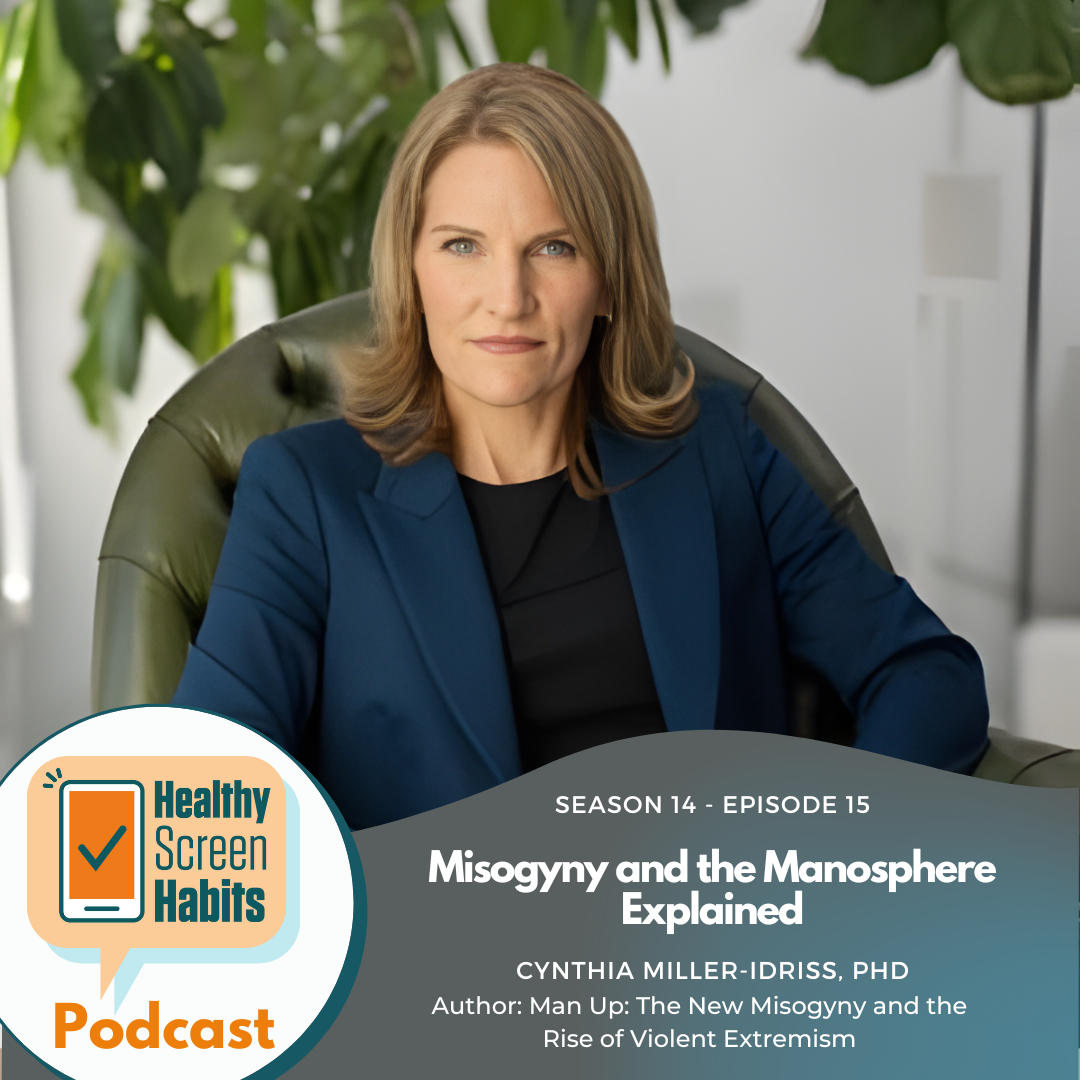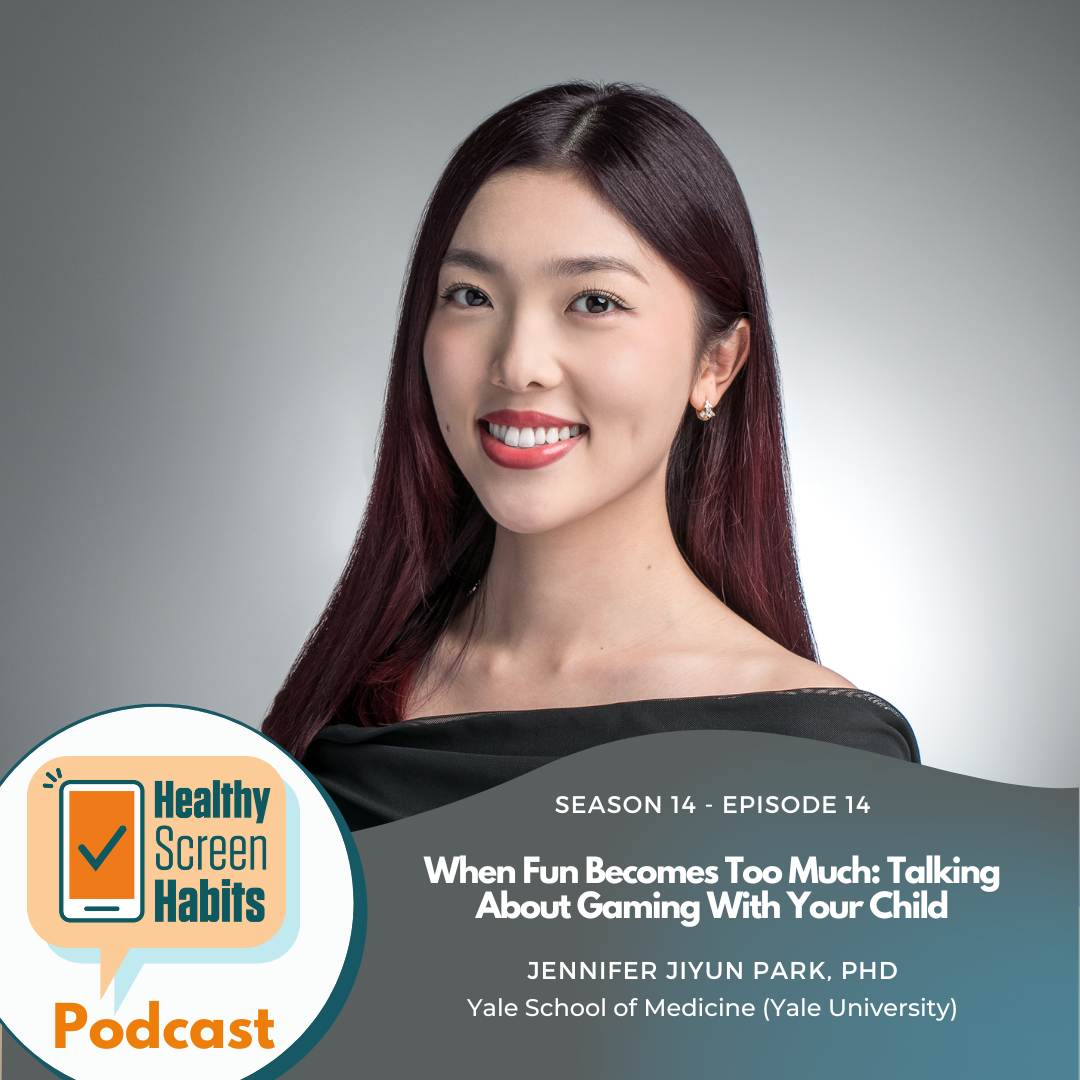S3 Episode 6: Teens and Tech - How Much? When? What kind? // Andrea Davis of Better Screen Time
Hosted by Hillary Wilkinson
“As our kids get older, it is so important to remember that we want to prepare them … not by telling them what to do, but by mentoring them and really letting them lead. And sometimes that means crashing sometimes, which isn't fun.”
-Andrea Davis
Founder of the top parenting site, Better Screen Time, Andrea Davis is committed to helping parents worry less about technology and connect more with their kids. Better Screen Time is the place for parents who want technology to hold an intentional place in their household. In this episode we talk about a 4-step plan to teens getting a cell phone.
Healthy Screen Habits Takeaway
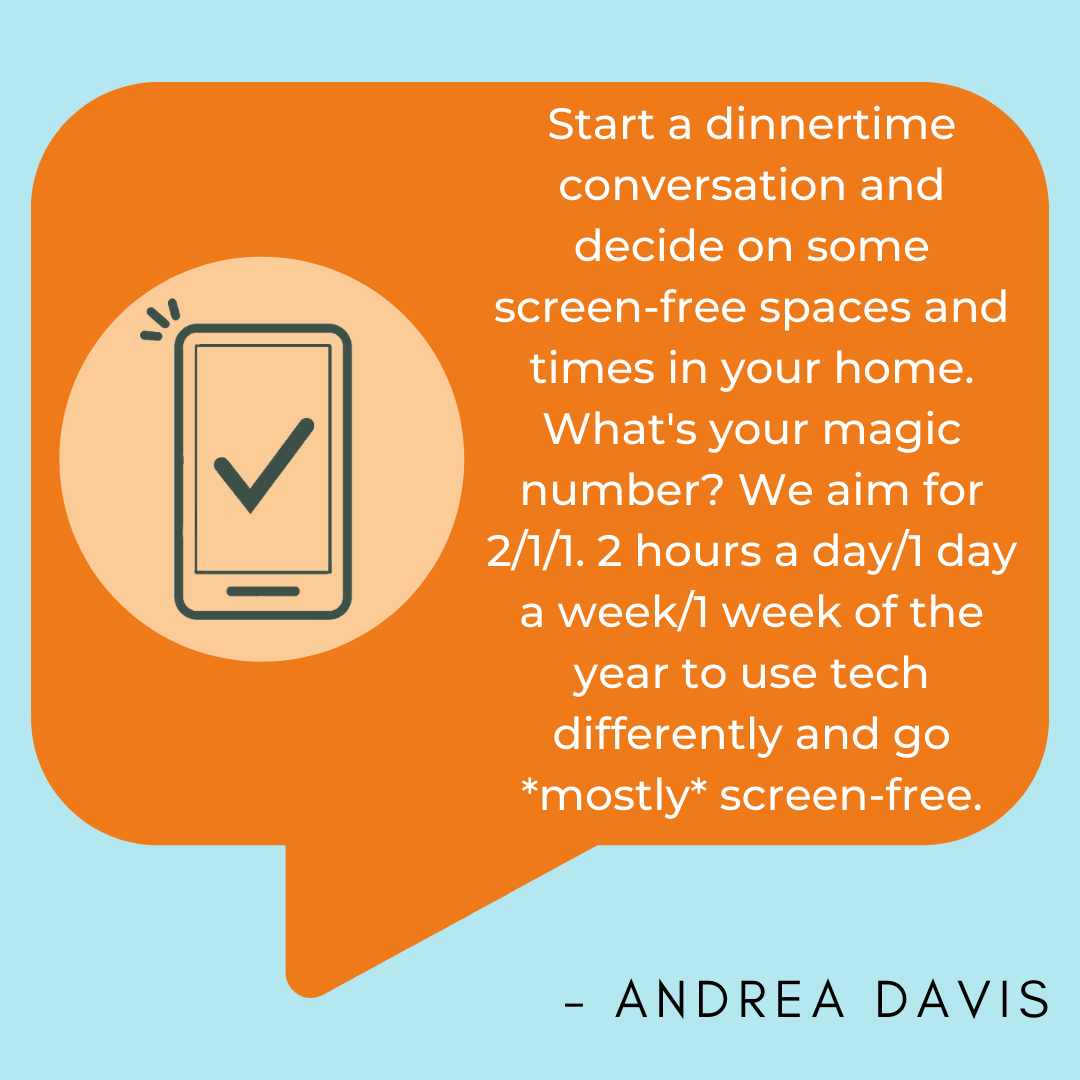
For More Info:
https://www.betterscreentime.com
RECEIVE 10% off by using promo code
HSHABITS for:
Better Screen Time's course "Creating a Tech-Healthy Family"
Other resources referenced:
Show Transcript
Hillary Wilkinson (00:04):
As the founder of the top parenting site, Better Screen Time. My guest today is committed to helping parents worry less about technology and connect more with their kids. Better Screen Time is the place for parents who want technology to hold an intentional place in their household. The husband, wife, team, and power parents of five: Tyler and Andrea Davis bring compassion and credibility when teaching families positive strategies to manage screen time better in their own homes. Welcome to the Healthy Screen Habits Podcast. Andrea Davis!
Andrea Davis (02:21):
Thank you, Hillary. I'm so excited to be here. That was an awesome introduction. <laugh>
Hillary Wilkinson (02:27):
Thank you, Andrea. I feel like you and I have been friends for a long time, but this is the first chance we've actually talked face to face. Yes. Like this is my own example of a parasocial relationship. True. Like a few years ago, Andrea experienced this pretty major house fire that was started with a Roomba that had been placed on a counter and turned itself on and ignited the gas stove, right? Yes, yes. Yeah, no. And honestly, all of us at Healthy Screen Habits were completely up in arms. All of this to say, I'm so glad you're here. And I'm glad you're well, and I know your house has come through it and we have actively followed you. <laugh>
Andrea Davis (03:14):
So well, and that's, what's amazing is these relationships that we do develop online. Like I felt your support and was supported by you guys, even though we've never met in person. But I think because we have this common mission, we feel, uh, just kind of this unifying strength, or I don't know what it is, but we feel a bit united in our cause.
Hillary Wilkinson (03:36):
I agree, I agree. It's kind of this digital wellness commute mm-hmm <affirmative> and, and going off of that, each of us in this kind of community have come here via a different path. And what was it that drove you to create Better Screen Time?
Andrea Davis (03:52):
Yes. Well, this journey really started a long time ago when I became a parent and, uh, we were chatting with a good friend. My husband was in grad school at Purdue at the time, and I was visiting with this friend and she was a voracious reader, just loved to read, had read everything. And I asked her, what did your parents do to instill this love of reading? And she said, “Oh, we, we didn't have a TV growing up.” And I was like, “Really?” ! I was totally just fascinated and curious. And so I told Tyler, I said, my husband, Tyler. I said, what do you think if we just put the TV in the closet, we don't necessarily get rid of it, but we use it more like an appliance. We just pull it out when we need to. And he's an engineer. So he is ultra practical.
Andrea Davis (04:38):
And he was like, sure, he's not really into sports. And that sounded good to him. And so it's crazy, but you know, our oldest is almost 17 now, so that experiment has lasted, she was probably two at the time, you know, 15 years. And that's still what we've been doing. So that that's really where it started, where I just kind of wanted to be intentional with how we use technology. And, uh, but fast forward, many years later, and you and I both know that the TV is the least of our concerns. Right? Right. And as our oldest entered middle school, we made a big move from Illinois to Oregon. It was really, it was an unexpected move. It was kind of a challenging time for our family. We had a hard time finding a place to live. And I handed over a smartphone to our oldest.
Andrea Davis (05:24):
She was in middle school. And at the time that's kind of what was available. I wanted her to be able to stay in touch with these friends that she had left behind. Sure. It's hard at that age. And I also wanted to know, I wanted to be able to get a hold of her in this place where I didn't know anyone. And I think as I've read and done research, I think post 9/11 and post Columbine parents definitely feel more of a need to stay connected with our kids throughout the day. And especially when you're in a new place. But I will tell you Hillary, it didn't take long for me to realize that I had made a mistake as a parent, that it was too much too soon. And at that time, Apple didn't even have the Screentime didn't even exist. And there were no, you know, smartphones without internet access like we have now. So it was, it was so hard, but we went back to a brick phone mm-hmm <affirmative>. And as I was searching to find, when is the right time to give your kid a phone? I just was finding a lot of fear based information. And it really, it seemed like parents like picked an age or they just said never. And neither of those really felt right to me. And I just thought okay. I, I know that I need to mentor our child and not just monitor. So that was how Better Screen Time got started.
Hillary Wilkinson (06:45):
Excellent. Yeah. But it came from a place of, in intention, you know, which I think is very much the mission of your organization to, and the stated is to help parents worry less and connect more with their kids. Yeah. And I'm, um, I'm always intrigued with how other moms do this. Like, you know, it seems like with our busy schedules, we're pulled a thousand different directions after school hits. And it's like, if I don't have dinner planned or if I don't have dinner pre-cooked by about 2:00 - it's like good luck, right? Yes. <laugh> yes. So how do you connect with your family?
Andrea Davis (07:31):
Yes. So I, I found that there's a, there's some tools that can help us and I turn to the three R's is what I call them. So this is through rituals, rewards and recharging. And that really is focusing on like screen free connection. Right. So rituals, I mean, I think they're the things that used to be very commonplace in society and in families, but between busy schedules and technology, you combine those two things together. Those family rituals have really, um, shifted mm-hmm <affirmative> and for some families have been completely lost. And so for us, you know, that's like family dinner sitting down and having family dinner together, but it's also spending time together doing special things outside of family dinner. So one-on-one dates with our kids. That's something that we really try to implement because with five kids, um, we find that our kids need some one-on-one time with just us once in a while.
Andrea Davis (08:32):
So that's another ritual that we try to instill. I also talk a lot about rewards and when I mention that people think, okay, what, what does that mean? Because I think sometimes parents like to use screen time as a reward. Like you get all your chores done and your homework's done, then you can have screen time, but I like to just instead build screen time inside the routine and make the reward actually time with you as a parent. So I say, reward your kids with your time, not screen time. And again, I think that just looks like sitting down and playing a game for 10 minutes or doing a puzzle together, or we have a trampoline and our even, and our oldest kids still like to jump on the trampoline. So like, let's go jump on the tram for 10 minutes or going on a walk, just very simple things.
Andrea Davis (09:23):
But I think those are the moments that we really connect with our kids and give them a chance to tell us about their day without badgering them necessarily with questions, because then I think things naturally come up. And so that's how we make those connections and then recharging. And so we've sat down with our kids and had a conversation about, okay, what do we do when we are, are stressed out or we feel like we need to unwind, how can we do that without a screen? And so we talk about recharging, you know, alone, but also as a family, what are some screen free things, activities that we love to do that we can, that can help us unwind without turning to a screen. And so I think just using those as kind of a foundation that each family can find what works best for them.
Hillary Wilkinson (10:13):
I think you have boiled down just the most critical path of parenting into those three Rs, you're teaching your child, a variety of ways that they can self soothe when you have that recharging time, rather than just relying on digital distraction. If they're out in the world and they find themselves being overwhelmed, they have all of these tools in their tool belts that you have done together with them when you're recharging, whether it is reading or drawing or going for a walk, jumping on the trampoline, all of those things that you said, and I let of the, um, the rituals, it, it also, I mean, it speaks to secure attachment with mm-hmm <affirmative>, you know, feeling safe, seen, and soothed, and you're continually checking in with your kids.
Andrea Davis (11:10):
Yeah. Well, and I like what you said about teaching. I think that's a big piece of it is that you are teaching your kids through living it <laugh> rather than through a lecture. And that's so much more powerful because again, we're not gonna be there when they walk out the door to say, Hey, you've spent 30 minutes or two hours on, you know, the laptop it's time to get off. If we instead like trying to live that connection, not, you know, teaching them how to recharge, then those are skills that they take with them.
Hillary Wilkinson (11:43):
Yes. And I think it works particularly well with our older kids, because it seems like as, when you go from this, uh, the role of parent, when our kids are younger, is a very different role than we take when our children hit their teenage years. Yes. And you kind of go from very like a managerial state in mm-hmm <affirmative> in, when they're younger to it almost kind of flips to more coach and mentor with the teen. It, it becomes not so much of a, let me walk in front and I'll show you the way to - let me walk alongside you. And then ultimately what, you know, what at least my goal is to, I wanna walk behind, I wanna, I wanna see what they do in the world, you know? Yes. So I think your three Rs are just creating that opportunity for that growth. That's beautiful. Yeah.
Andrea Davis (12:39):
Yeah. I, I attended a training last night. They were talking a lot about working with teenagers and they were talking about that importance of that. We are mentoring leaders. We're not leading them. Yes. And I think, again, as our kids get older, that is so important to remember that we want to prepare them to step in, into our role and not by telling them what to do, but by mentoring them and really letting them lead. And sometimes that means crashing sometimes, which isn't fun.
Hillary Wilkinson (13:12):
Absolutely. And knowing that those, um, those stumbles, you know, those crashes aren't gonna be an end all, I mean, crashes are to be expected. Yes. We, we anticipate those stumbles when they're toddlers, you know? Yes. And so why don't we, why don't we anticipate those stumbles when they're teenagers? For some reason I, I struggle more with, with the older stumbles than I ever did with the younger, you know? Yeah.
Andrea Davis (13:58):
Well, I think it's because it feels like the consequences are that much more, uh, they're bigger. <laugh> yeah. They feel a lot bigger
Hillary Wilkinson (14:06):
For sure. For sure. Right. Okay. Well, we have to take a quick break, but when we come back, I wanna dive into how we set our families up for success when integrating digital life with family time.
Ad Break —--HSH Bookclub—--
Hillary Wilkinson:
My guest is Andrea Davis, a former secondary ed teacher turned screen time navigator. She's the founder of Better Screen Time where she shares family tested ideas from the tech trenches as a mom of five. Andrea, one of the things that you show often on like your, um, posts on whether it's blog posts or social media are family meetings, mm-hmm <affirmative> and I admire you greatly for pulling them off. I crack up when I see the big flip chart come out, because I completely recognize the teacher tools. I also recognize that my kids would 100% go on strike if I tried something like that. Like, so yeah. So I look at that and I go, that is so amazing and admirable. How do you pull that off? Like how do you get buy in from your kids when you're having a family meeting?
Andrea Davis (15:53):
Yes. Well, I believe it starts when our kids are young. And so if we can, you know, if there's any parents with younger kids listening, like starting those family meetings, when your kids are little and making them even like five minutes is great, because then it doesn't seem strange when all of a sudden they're 12 and you have big issues and you pull out the flip chart. They're not gonna panic! But I will say that, you know, if you've never done that before, and that does seem like your kids are gonna just lose it. If you try to pull something like that off, I think that the conversation can be much more organic as in, you still kind of need to plan for it as a parent and with your spouse or partner, if you have, you know, someone that you're parenting with, but you don't have to necessarily pull out a flip chart for it to be effective.
Andrea Davis (16:44):
So, you know, I tell families - obviously like dinner time, just thinking of times when you're normally gathered is a great time to just bring up even a news article. Like the recent Facebook Files bringing up, Hey, I saw this article that said Instagram is toxic for teen girls. And if you've got older kids, it's a great conversation to have. With younger kids that might not be the thing that you wanna bring up and talk about might be something more simple. But, you know, we started these conversations with our kids and then put them in a discussion guide called Creating a Tech Healthy Family. And their 10 must have conversations to help you worry less and connect more with your kids. And so in that we are of course, like saying, okay, pull out the poster board or the flip chart or the whiteboard, because I think there's power in the kids participating. And that's one reason why we use that is because our kids take turns writing and being the scribe. And they like that. Oh, sure. They like to be like, oh, I'm, I'm in charge of writing. And, and they take turns.
Hillary Wilkinson (17:46):
A big magic marker is a big motivator.
Andrea Davis (17:48):
Yeah. You, yes, exactly. Because there are always drawings, strange drawings that go along with it too. And that's totally fine because everyone's there and they're participating, so whatever works, but yeah. Pulling out the markers, letting them take part is a good way to get buy-in. I'm never against pulling out a treat, getting some ice cream out and just making it a fun thing and then always letting our kids know why, like we're doing this so that we can all get on the same page about how we wanna use screens. Mm-hmm <affirmative> and this is again, I love Steven Covey's idea begin with the end in mind. Yes. So we really wanna think, how do we wanna use technology and screens now so that we can have the relationships that we want later mm-hmm <affirmative> and if we don't sit down and have this conversation, we're, you know, we're gonna drift apart, technology's going to kind of take over and if you even just tell your kids, Hey, everybody has been on screens
Andrea Davis (18:46):
Way too much, including me. And I think if that is another great way to, to get buy in is letting your kids know that this is about the whole family, parents included. And it's fine to like, admit your mistakes. I've noticed that I've been on my I've been working like after dinner and not really paying attention or having conversations with everyone or helping everybody get to bed, I wanna do better at that. How can you guys help me, help me do better? Because I, I wanna make sure that I'm present and that I'm here for, for your childhood and, and to have conversations with you. And so that's also a good way to get buy-in because the kids can.
Hillary Wilkinson (19:27):
Asking for help! Yeah
Andrea Davis (19:27):
Asking for help and not being, let this is all about you, the kids. And if you, if you do that, that's a sure way to get everybody to completely shut down.
Hillary Wilkinson (19:38):
Sure. Because you're, you're, it's not like let's come up with a solution together. Yes. So I love that you have this way of really honoring the kids in their process and bringing them into that family dynamic of decision making and kind of setting the blueprint for, for your family's tech plan. And one of the tools that I think does this really well is the self-evaluation for cell phone usership. And can you take a minute and explain this and maybe even a few of the steps of the self evaluation?
Andrea Davis (20:20):
Definitely. So this was born out of our need, as you just heard to figure out, when do we hand over a cell phone? Do we ever? What should this look like? And so we sat down with the, kids and had the, our big post-it note. And I said, okay, guys, I have two questions for you. One is what does it mean to be responsible? And the kids were like, oh yeah, we got this. Like, okay, you get up for school on your own. You do your homework without being asked. You do your chores. Um, you know, all these things that you're responsible with your belongings. And then I said, okay, second question. What does it mean to be emotionally mature? Now that can be, that's a big one. Yeah. For young kids. But if you kind of start talking about it, if you've got older kids, it's like, oh, okay.
Andrea Davis (21:09):
That's being kind to your siblings. That means that you don't lose your cool when you don't get your way. And, and just kind of unpacking that a little bit, but I really can't think of a better way to describe emotional maturity. I'm like, that's what it is, but it kind of is kindness and it's, um, yeah, it, it's more than being responsible. It's kind of a little bit more about your character and your values. And so we talked about all those things and I said, “Man, this is an awesome list. You guys, these are all the things that a person needs to be and to be doing before they are able to have a cell phone”, because I said, “Man, this thing, is so powerful. And we've learned that we made a mistake as parents. So we're backtracking and we wanna do this better.”
Andrea Davis (21:58):
So there isn't really a certain age when it's right. You know, it's and, and then again, like when you look at all these things, you have to be the old and responsible. Like to me, these are like older teen things that some older teens can do and some still can't. So we took all those answers and flipped them and turned them into a self-evaluation again. That's the teacher in me, but I, in the classroom and in the home, there's so much power. When you give the student or the child, the opportunity to self-reflect and evaluate, instead of you telling them, this is what you're not doing, right. This is what you need to do better. And obviously like some kids are not going to be honest when they self-evaluate.
Hillary Wilkinson (22:45):
I was gonna say, what, what do you do if you get the list handed back to you and you've got, oh, yes, yes, yes, yes, yes, yes, yes checked off? ,
Andrea Davis (22:51):
Yeah. Some parents do, some parents will tell me and I'm like, Hey, then that's your starting point for a conversation. Yeah. And that's where you really, you do kind of have to start listing the things. Okay. So your chore, like our kids all do the same job for a whole month. So it's like, okay, your job for the month is to take out the garbages. But sadly, the garbages have been overflowing the past two days and I've had to remind you. And so again, like, those are very concrete things. If you kind of have those routines set up in your home or where, you know, oh, your, you know, your teacher emailed me and you have like five missing assignments there's proof. So again, you're not you just like the proof's there. Right?
Hillary Wilkinson (23:36):
Right. So you kinda removing, kind of making everything very objective, making everything, just kind of fact oriented rather than an open for parent interpretation.
Andrea Davis (23:48):
Yes. Like, oh, you're not responsible. Right.
Hillary Wilkinson (23:51):
I, I have found when assigning chores in my own home, there seems to be a stage when my children hit jobs that are either done or they're not like the, the job of dust or is something that I have to take over because it tend…. as it turns out <laugh>, that is a very variable job. It is a, like you, 100% trash removal it's done, or it's not , you it's, there are some things that, that get very black and white <laugh>.
Andrea Davis (24:27):
That's such a good point. But yeah, I think then you, you have the opportunity to have a conversation. And, but I've had like a mom who had a 16 year old, they printed out the evaluation. She said, my 16 year old son like said, “I'm not doing half of these things, mom.” And he put the self evaluation up on his bedroom wall to help him like think, okay, these are the things that I want to do and I need to do before I get a cell phone. I was like, wow! that right there is demonstrating emotional maturity!
Hillary Wilkinson (24:58):
For sure.
Andrea Davis (24:59):
Again, if you have a child who is totally answering, like, no, no, no, I, or I, yeah. Or yes, I'm doing all of the, these things and you know, they're not, that's like, okay, red flag, they are not emotionally mature and ready for a cell phone because they can't be honest here. They're not gonna be honest on a device. That's, that's gonna capture their attention.
Hillary Wilkinson (25:19):
Right. Right. Whether it's called emotional maturity or self awareness. Yes. You know exactly. I mean, so you're also, um, kind of teaching that tool of self-awareness and of perception. Yes. So yeah. Really important. Oh, so, okay. So now we've created love in our home while we've, you know, practiced the three RS, we've got healthy boundaries and each member has fingers on the blueprint of our plan. Our teen has successfully followed through with their self evaluation and is old enough to start using a cell phone. And so we're ready to take the leap. And now what?
Andrea Davis (26:01):
Yes. So I had the same question and I'm a person of faith. So I spent a lot of time praying about this. And, um, I just had like this scripture that came to my mind, it was about line upon line, precept upon precept. And I always tell parents if you're not religious, or that's not your thing, this concept can be applicable no matter what your beliefs are. It's like the idea of just, um, knowing that we're ready for things at different stages. Mm-hmm, <affirmative> just like with, and I think we use this analogy a lot in the digital wellness space, but like, we're not gonna hand over the car keys of the family car to our five year old. Right. And so again, thinking about at what stage am I ready for what? And so I thought, okay, line upon line, precept upon precept.
Andrea Davis (26:50):
What does that look like when it comes to digital access? And it just had this image in my mind and it was like, okay, it's like the brick phone, which again, five years ago, that was all that we really had. <laugh> mm-hmm <affirmative> and then, or a watch. And then we're moving up to a smartphone that has limited access. So of course now the Gabb phone exists and there are other smartphones on the market now that have limited access. And so that's awesome. However I have a lot of people that are in our better screen time community that live in other countries mm-hmm, <affirmative> where those kind of phones aren't available. So I just say find the most simple device that you can, whether that's a brick phone, flip phone, a watch mm-hmm <affirmative> and start there. Then we move up to a smartphone that has limited access.
Andrea Davis (27:41):
So you're really just calling, texting, you know, maybe a camera, very limited features. And then that third phase is to add some apps that might be useful. And I think that this is one thing that does start to get challenging because as our kids enter high school, quite often, even at school, they're asking them, okay, download this app because we need it for this activity or whatever. And so that's where, you know, the Gabb phone can kind of take you to a certain point, but then, you know, there's other phones on the market now, like Troomi and Pinwheel that allow you to allow certain apps mm-hmm <affirmative>. And so that can be a good, a good thing. Or if you're using an Android or an apple device, you can use digital wellness, or screen time to limit the apps that are available. And so again, just limiting those apps, really ask, sitting down with your teen, okay, what is this app? Why do you need it?
Hillary Wilkinson:
Taking that inventory.
Andrea Davis :
Yeah. Using it together. And then that very, very last step is adding social media. And that's phase four of our four phase process. And that's simply because you and I both know that social media is a whole nother animal its a beast, and it is very challenging to, to really monitor that well, because you have DMs, you have things to it disappear.
Hillary Wilkinson:
It's designed to not be monitored. Yeah. There's no filtering process that will.
Andrea Davis:
Yeah. And as you and I both know everything's there, right? So at that point we have another evaluation. “Am I ready for social media?” And again, that's something that the parent and the team we'll fill out, because I think parents have an equal responsibility to make sure that they've talked to their kids about pornography, about cyberbullying, about sexting. I mean, all these things that we don't always think of when we hand over a device, those things all really need to be in place before we are allowing social media. And then you can take that slowly, too, which we talk about in our course, Untangling Teens and Tech, but just really, um, you know, putting the social media app on your phone first mm-hmm <affirmative> as a parent, you know, that's to what we've done, where the app, you know, my daughter had an account, but it wasn't on her device. It was on mine. And so she could use it on my phone and there, so there's just baby steps like that, that we can take to help them gradually work into it.
Hillary Wilkinson:
I think that's a very healthy walk into those waters. You're not jumping right into the deep end. You are taking them slowly and showing them safe techniques. And I think that's beautiful that four phase process, and ultimately like, as we said, the goal is for them to have their own social media accounts and to move out into the world on their own. So yeah, that's really teaching for independence. Mm-hmm <affirmative> so we have to take a short break, but when we come back, I'm going to ask Andrea Davis for her Healthy Screen Habit.
—--Ad break: HSH Website—-----------
Hillary Wilkinson:
Better Screen Time helps families establish screen time as a positive experience. They believe that using everyday interactions to establish routines and expectations, help families to enjoy technology intentionally and learn to avoid the pitfalls that are so common in our society. Andrea Davis works tirelessly in this arena and has so many family friendly, great tips and tricks to make this happen. And now we get to learn one <laugh> right. <laugh> Andrea. On every episode of the healthy screen habits podcast, I ask each guest for a healthy screen habit. This is a tip or takeaway that our listeners can put into practice in their own home. Could you share a Better Screen Time, Healthy Screen Habit?
Andrea Davis:
Yes. I recommend that families start a dinnertime conversation and decide on some screen free spaces and times in your home. If you haven't done this already, this is a really easy place to start to just get started. I think that that is one of the habits that if put in place can protect your kids' minds, protect their spirituality, protect their time safeguard so many things. And so I always recommend that - and then find your magic number. So as you're sitting together at dinner, talk about how you want to use screens and what your magic number is for the amount of time that you want to spend away from your screens. So we in our family, we aim for 2, 1, 1. And so that is two hours a day away from screens, one day a week, and one week out of the year to use tech differently and to go mostly screen free.
Andrea Davis:
And, again, I think like having that, uh, morning routine where your device, isn't a huge part of that as a mom might need to check your phone for texts and send a text because we're arranging and planning for the day, but not jumping on social media or email and all those things. But instead, starting your day with intention, you know, hopefully can give yourself some time then. And again, some time in the evening or in, during the day, but trying to have at least a couple hours where you're just away from your phone and, uh, one day a week. So our, for our family that's Sunday and we don't go completely screen free because we use our screens sometimes for like spiritual lessons and things like that. Um, but I think families can pick any day that works best for them. I know you're familiar with Tiffany Shlain where their family is Jewish.
Andrea Davis:
So they celebrate, or they do a Tech Shabbat from Friday sundown to Saturday at sundown. And I love that and they go completely screen free. So just picking a week where you are using tech differently. And then I say one week out of the year, but I honestly aim for more than that. I always take a big social media sabbatical in the summer. It's usually at least three weeks, sometimes longer. Um, one summer I went six weeks, just completely deleted apps off my phone and stepped away. And it was wonderful. And also just thinking of how as, um, Cal Newport talks about optional technologies, how can you during that week, how can you step away from optional tech and really take time to connect with your family?
Hillary Wilkinson:
Interesting. Um, I love the whimsy of this concept of a magic number. I think it would be, it would be an easy sell to a lot of kids of, you know, and it might even be fun to, you know, say, you know, tell them that it has to be three digits, but you know, right off the bat, have everybody give you a magic number and then tell them what it's going to be applied to. You know? I mean, yeah, that would be fun. It would be fun just to, to play with it, you know? Totally. Yes. I love that. Who doesn't want more magic in their life? That's right. That's right. That might be a parenting win, cuz they might go for the biggest numbers possible.
Andrea Davis:
<laugh> That's true. Yeah. You never know.
Hillary Wilkinson:
Oh, okay. Well, if our listeners would like to learn more about Better Screen Time, the power couple: the Davis's behind it and the teen self evaluation or four phase process to cell phone usage. I will link all of that in the show notes of this episode, which is Season 3, Episode 6 on the Healthy Screen Habits website. Andrea, I can't thank you enough for chatting with me today.
Andrea Davis:
Oh, I loved being here with you Hilary. I'm so glad we made it happen!
About the podcast host, Hillary Wilkinson
Hillary found the need to take a big look at technology when her children began asking for their own devices. Quickly overwhelmed, she found that the hard and fast rules in other areas of life became difficult to uphold in the digital world. As a teacher and a mom of 2 teens, Hillary believes the key to healthy screen habits lies in empowering our kids through education and awareness.
Parenting is hard. Technology can make it tricky. Hillary uses this podcast to help bring these areas together to help all families create healthy screen habits.
